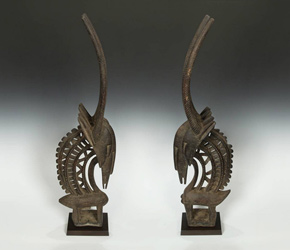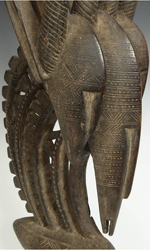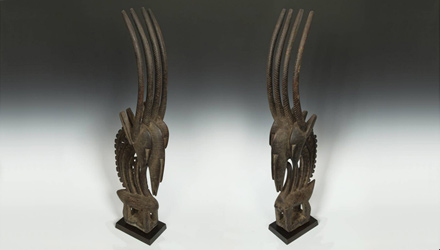| |
 |
| |
Male and Female Chiwara, or Antelope Headdresses from the Bamana people |
Who are our most important teachers? Our parents, those who guided us in school, mentors found in the workplace; and how do we honor them? The rural Bamana people of Mali, West Africa recognize a curious creature as their most important teacher – a half human, half antelope named Chiwara who taught farming to the people. The story of Chiwara is simple. Back when humankind were hunter gatherers, the mythic Chiwara dug up the earth using its antlers and showed people how to drop seeds into the soil before covering them up with its hooves. This teaching earned Chiwara the utter devotion of the people; but Chiwara is not a god. Chiwara is a concept, which extends beyond agriculture and the Bamana people themselves.
 |
|
| These abstracted antelope forms often depict children on the back – however this pair features an extremely rare three-headed motif |
|
This week’s New Arrival features a pair of Chiwara headdresses. Considered a classic in African art, they depict stylized antelopes and are worn on the head when danced. Chiwara are normally created in male and female pairs and seen at festivals honoring the mythic creature’s contribution to the people. Although there are multiple styles of Chiwara, this pair is totally unique. Look closely; each piece has three heads and four horns. Imagine a pair of dancers alternately loping through the air and pawing the ground, reminding enthusiastic villagers – and ourselves – that knowledge is not just given, but learned; abundance is the result of applying what’s learned, and gratitude must be cultivated as surely as rows of maize on the African plains.
View Product ››


